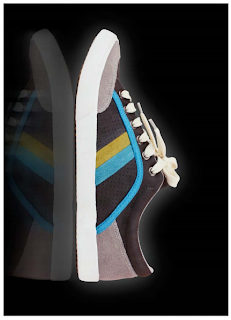Charmin used experiential marketing over the 2007 holiday season by installing 20 restrooms in Times Square. The pop-up restroom installations were a massive success with 392,862 visitors participating (Hospes, 2010).
Here is how Charmin effectively implemented experiential marketing using "4 Steps to Engaging Guerrillas":
1. Understand the brand's Unique Selling Proposition:
 Charmin created a clean and comfortable experience for New Yorkers and tourists in the bustling city. Instead of searching for any restroom in the city, customers experienced a clean restroom with soft toilet paper rather than dirty porta-potties with cheap and thin toilet paper. Instead of people hurrying to got and get out of the bathroom, Charmin created an experience where customers wanted to stay. Their Twitter hashtag #tweetfromtheseat also promotes this notion of a comfortable bathroom experience.
Charmin created a clean and comfortable experience for New Yorkers and tourists in the bustling city. Instead of searching for any restroom in the city, customers experienced a clean restroom with soft toilet paper rather than dirty porta-potties with cheap and thin toilet paper. Instead of people hurrying to got and get out of the bathroom, Charmin created an experience where customers wanted to stay. Their Twitter hashtag #tweetfromtheseat also promotes this notion of a comfortable bathroom experience.
2. Incorporate the USP in nature:
Installing 20 pop-up bathroom sites around NYC
3. Incorporate audience engagement into the idea:
 As pictured to the right, the restrooms contained 6 different types of Charmin rolls for the consumers to try. Charmin also made the experience a product contest by having the participants choose which type of toilet paper (Ultra Strong vs. Ultra Soft) was their favorite. They used giant flush-o-meters for people to cast their vote! (Partnership Activation, 2008). Lastly, two giant Charmin bears were on-site for pictures.
As pictured to the right, the restrooms contained 6 different types of Charmin rolls for the consumers to try. Charmin also made the experience a product contest by having the participants choose which type of toilet paper (Ultra Strong vs. Ultra Soft) was their favorite. They used giant flush-o-meters for people to cast their vote! (Partnership Activation, 2008). Lastly, two giant Charmin bears were on-site for pictures.
4. Finish the idea by creating an effective call-to-action:
Every person who voted in the contest was rewarded with coupons for the product. Participants could also purchase branded t-shirts, boxers and bears as a take-away from the event.
Remember: Say "I do" to engaging the audience with guerrilla marketing--Kayleigh Green
Sources
Installing 20 pop-up bathroom sites around NYC
3. Incorporate audience engagement into the idea:
 As pictured to the right, the restrooms contained 6 different types of Charmin rolls for the consumers to try. Charmin also made the experience a product contest by having the participants choose which type of toilet paper (Ultra Strong vs. Ultra Soft) was their favorite. They used giant flush-o-meters for people to cast their vote! (Partnership Activation, 2008). Lastly, two giant Charmin bears were on-site for pictures.
As pictured to the right, the restrooms contained 6 different types of Charmin rolls for the consumers to try. Charmin also made the experience a product contest by having the participants choose which type of toilet paper (Ultra Strong vs. Ultra Soft) was their favorite. They used giant flush-o-meters for people to cast their vote! (Partnership Activation, 2008). Lastly, two giant Charmin bears were on-site for pictures.4. Finish the idea by creating an effective call-to-action:
Every person who voted in the contest was rewarded with coupons for the product. Participants could also purchase branded t-shirts, boxers and bears as a take-away from the event.
Remember: Say "I do" to engaging the audience with guerrilla marketing--Kayleigh Green
Sources
- Chung, J. 2006. Charmin's Time Square Bathrooms Are Open For Your Business. http://gothamist.com/2006/11/20/charmins_times.php
- Hospes, C. 2010. Guerrilla Marketing from Marginal to Mainstream. http://www.creativeguerrillamarketing.com/guerrilla-marketing/guerrilla-marketing-marginal-mainstream/
- McDonough, G. 2007. http://meetschmitt.typepad.com/schmittblog/2007/05/plunging_into_e.html
- Partnership Activation. 2008. Is There Money In the Can? http://www.partnershipactivation.com/partnership-ideas/?currentPage=23




















